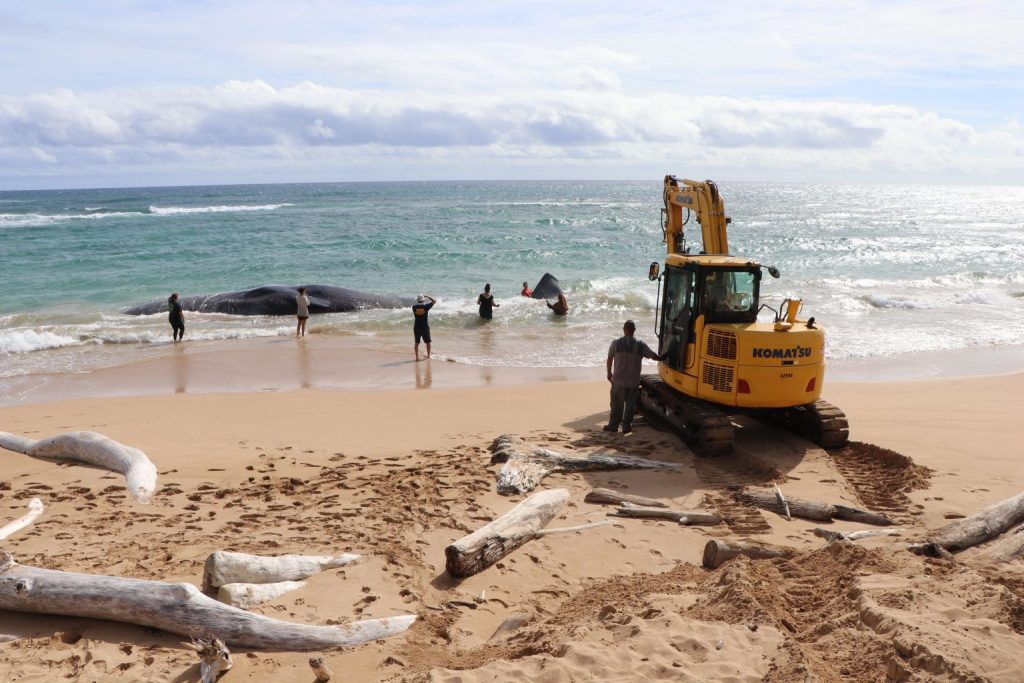(KAPA‘A, KAUA‘I) – The cause of death of a 56-foot-long, 120,000-pound sperm whale, that appeared on the reef fronting Lydgate Park, won’t likely be determined for some time.
A pair of excavators, one large and one small, provided by Kaua‘i County, made numerous attempts to free the whale from the shoreline and move it onto the beach. High tide brought it to shore overnight.
This afternoon, a large excavator from the DLNR Division of Forestry and Wildlife (DOFAW) joined the two county machines, in another attempt to free the massive animal from the shoreline, where it’s embedded in wet sand.
Once the carcass is on dry ground, Dr. Kristi West and her team from the University of Hawai‘i Health and Stranding Lab will begin a preliminary investigation into the whale’s death.
“There are many possible causes including disease, injuries from a vessel strike, entanglement with discarded fishing line, or ingestion of plastic marine debris,” West explained.
Experts won’t be able to settle on an exact cause of death until lab tests are returned in several months. “It’s important for us to probe each death of our marine mammals, sentinel animals like this whale, as that can provide information and data that helps inform management decisions and can provide a more complete picture of species health.”
Today’s operation was under the watchful eye of Jamie Thomton, the Kaua‘i Stranding Coordinator with NOAA Fisheries. “Based on how fresh the carcass is, the whale probably died in the last few days.”
Native Hawaiian practitioners also viewed the day’s activities and conducted cultural protocols throughout the day.
Mimi Olry, the Kaua‘i Stranding Response Coordinator with the DLNR Division of Aquatic Resources (DAR) said sperm whales don’t wash ashore on Kaua‘i all that often. “This one happened at a busy beach park, so many people saw it and watched today’s efforts.”
Police lines were moved back as heavy equipment arrived on the scene and officers from the DLNR Division of Conservation and Resources Enforcement (DOCARE) had to shoo several people off the beach or from the closed park area for their safety.
Thomton said each stranding presents different challenges. Once the whale is on the sand he thinks the post-mortem exam will go smoothly.
The remains of the whale will be buried in an area that has been approved by the DLNR State Historical Preservation Division (SHPD) to ensure no iwi kūpuna will be disturbed.
Large mammal strandings demonstrate the high level of collaboration between federal, state, and county agencies.
Sperm whales are listed as endangered under the Endangered Species Act and are protected under the ESA and the Marine Mammal Protection Act. It is against both federal and state law to remove any body parts or bones from these whales.

